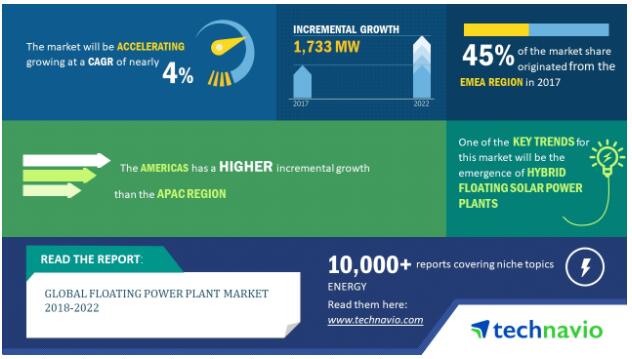
A key factor to driving market growth is increasing demand for alternative power solutions. Normally, electricity is obtained from power grid. Nevertheless, if a ground power plant malfunctions or fails to meet the entire load, it will negatively impact the running of hospitals, schools, businesses and many other infrastructures. Such being the case, floating power plants will be employed in supplying electricity to the affected area or specific facilities that require power.
The report notes that hybrid floating photovoltaics will become one of the major emerging trends in the floating solar industry worldwide. Although there are some problems like intermittent fault, they can be solved by combining another renewable energy system with the floating power plant. Therefore, hybrid floating PV increasingly become a good choice for developers.
In 2017, the renewable energy industry had the largest market share, accounting for nearly 87%. It expected to embrace floating solar photovoltaics during the forecast period. In addition, Europe, Middle East, and Africa (EMEA) took a lead in global markets the same year, with a market share close to 45%. The number was predicted to decline by 2% during 2018-2022.
A senior analyst of Technavio said, "Companies at home and abroad are keeping abreast of this trend, as they combine hybrid floating solar photovoltaics with wind turbines or the power facilities of hydroelectric dams."
To conclude, floating photovoltaics are the new wave of renewable energy and boast great strengths such as no land occupancy, convenient tracking, water saving, storage opportunity, efficiency improvement. As we look forward to the future, floating solar will breakout in the following years. (Editor: Claire Jeawin)